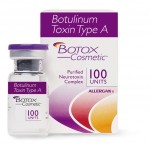
Jaw clenching, also known as bruxism, is a common condition that causes facial pain and excessive wear on one’s teeth. Typical treatments include night time splints to protect the teeth and medications that attempt to decrease inflammation of the muscle or cause sedation in attempt to limit the strength of the muscle. Neither approach really addresses the source of the problem….excessive muscle activity and spasticity.
Botox would seem to be a very logical approach to the treatment of bruxism. It can be injected precisely into the most sore part of the muscle, weakening the most spastic part of the very large masseter muscle without affecting the ability to chew. Breaking the spasm of a muscle often only requires stopping the origin or focal area of contraction and not the whole muscle. Even with only partial relief of muscle tension, pain is less and less clenching occurs.
This has been precisely my experience with the treatment of clenching and associated TMJ disorders. The key to a successful outcome is to be able to locate by feel the source of muscle spasm. Usually this is possible as the patient knows where the most sore part of the jaw muscle is. Injections can be done either through the outer skin into the underlying muscle or through the mouth if this is easier to access the medial edge of the masseter muscle or the temporalis muscle attachments. The only area to avoid for injecting is directly into and through the parotid gland area. It usually takes about 25 to 30 units per the affected side as a starting dose. It may eventually take a higher dose to get more complete relief but this starting dose should as least get some relief. If no relief is obtained at this dose, this would suggest that a higher dose is unlikely to be effective either.
Like all Botox injections, it takes about a week to see its effect, so one has to be patient. I have noticed sometimes that the injections may actually cause some discomfort in the first few days due to the needle trauma to the muscle from the injection. For this reason, I like to mix Marcaine, a 24 hour lasting local anesthetic, with Botox to get some immediate relief before the Botox starts to take effect.
Dr. Barry Eppley
Indianapolis, Indiana


